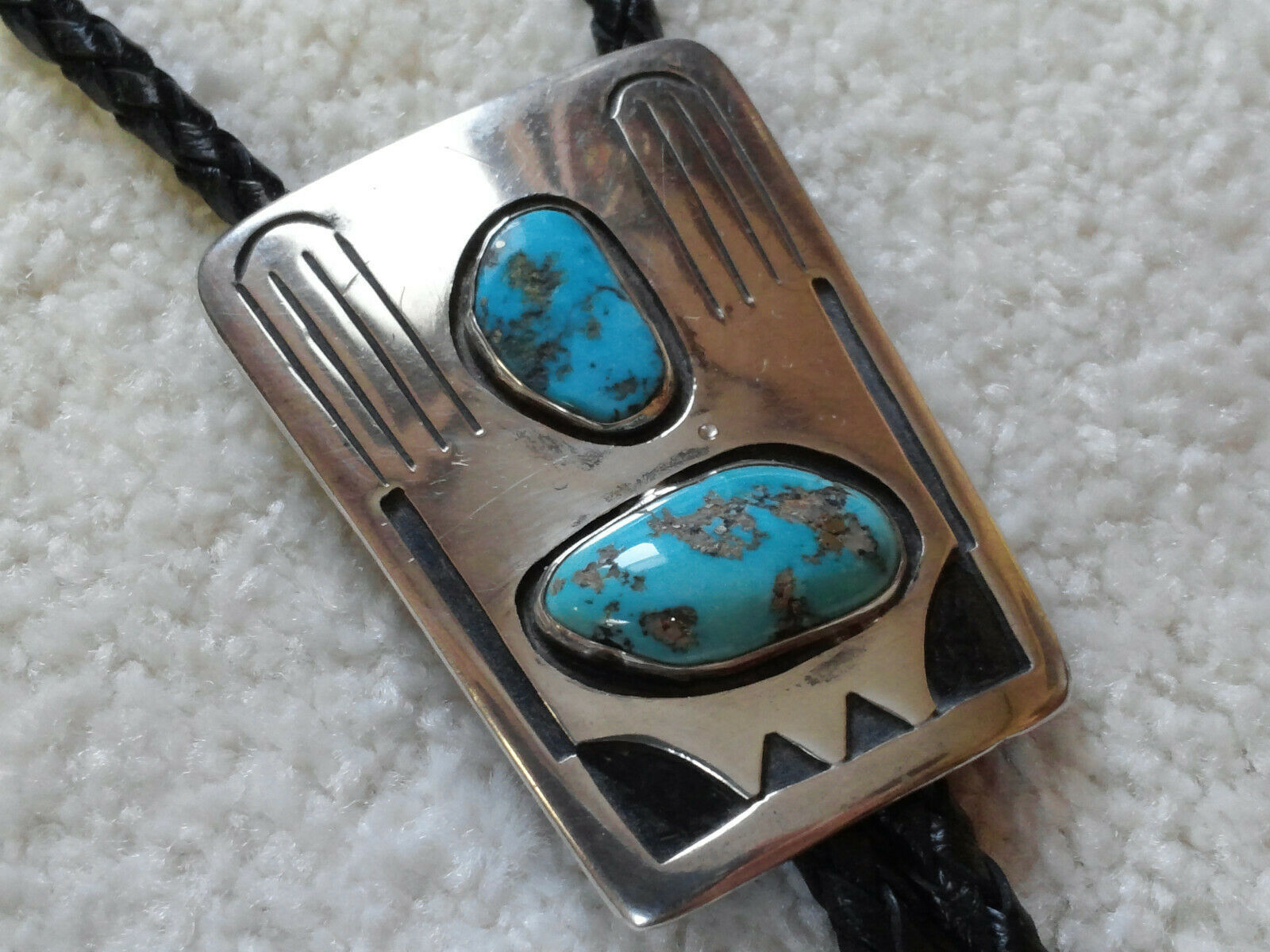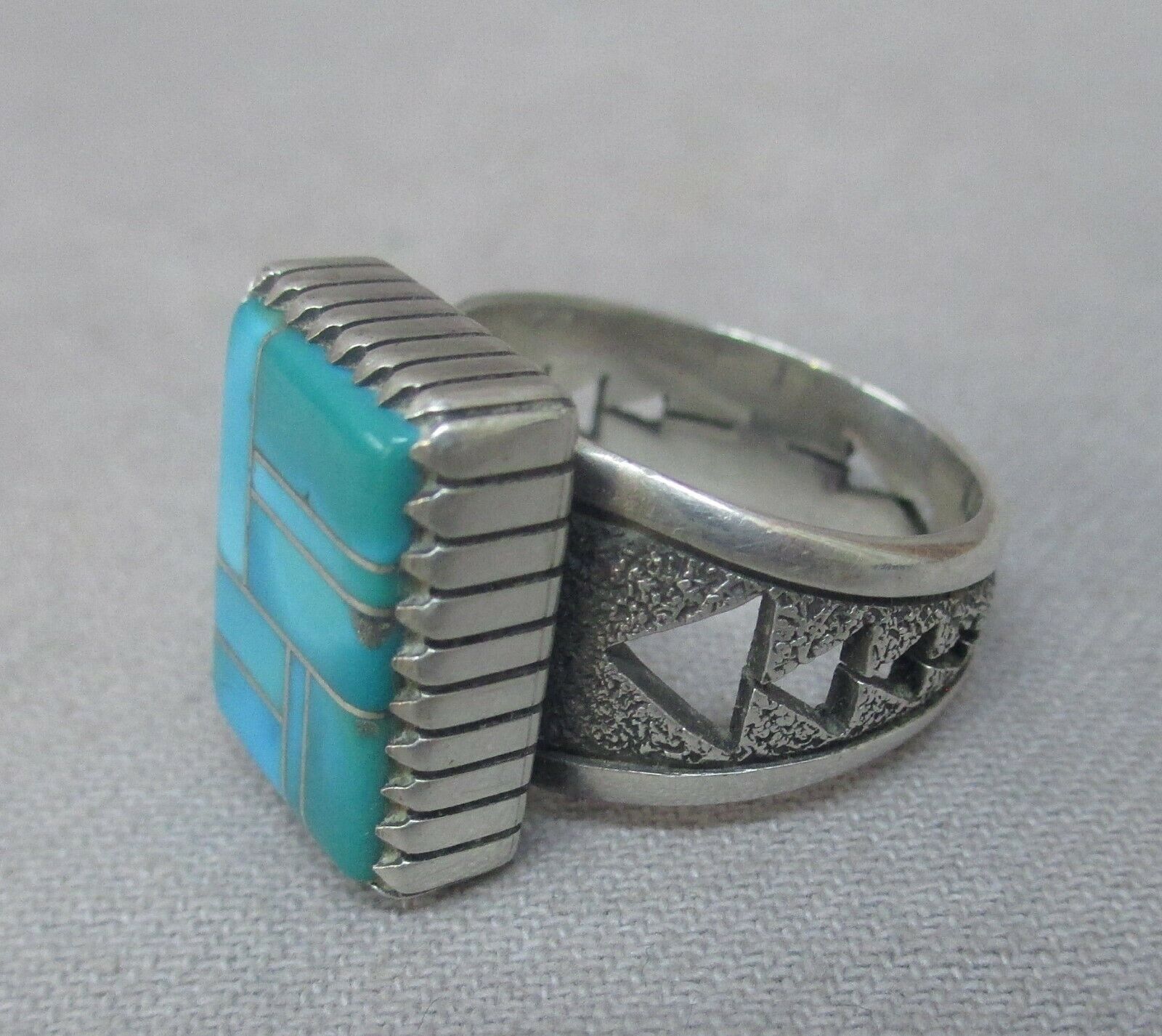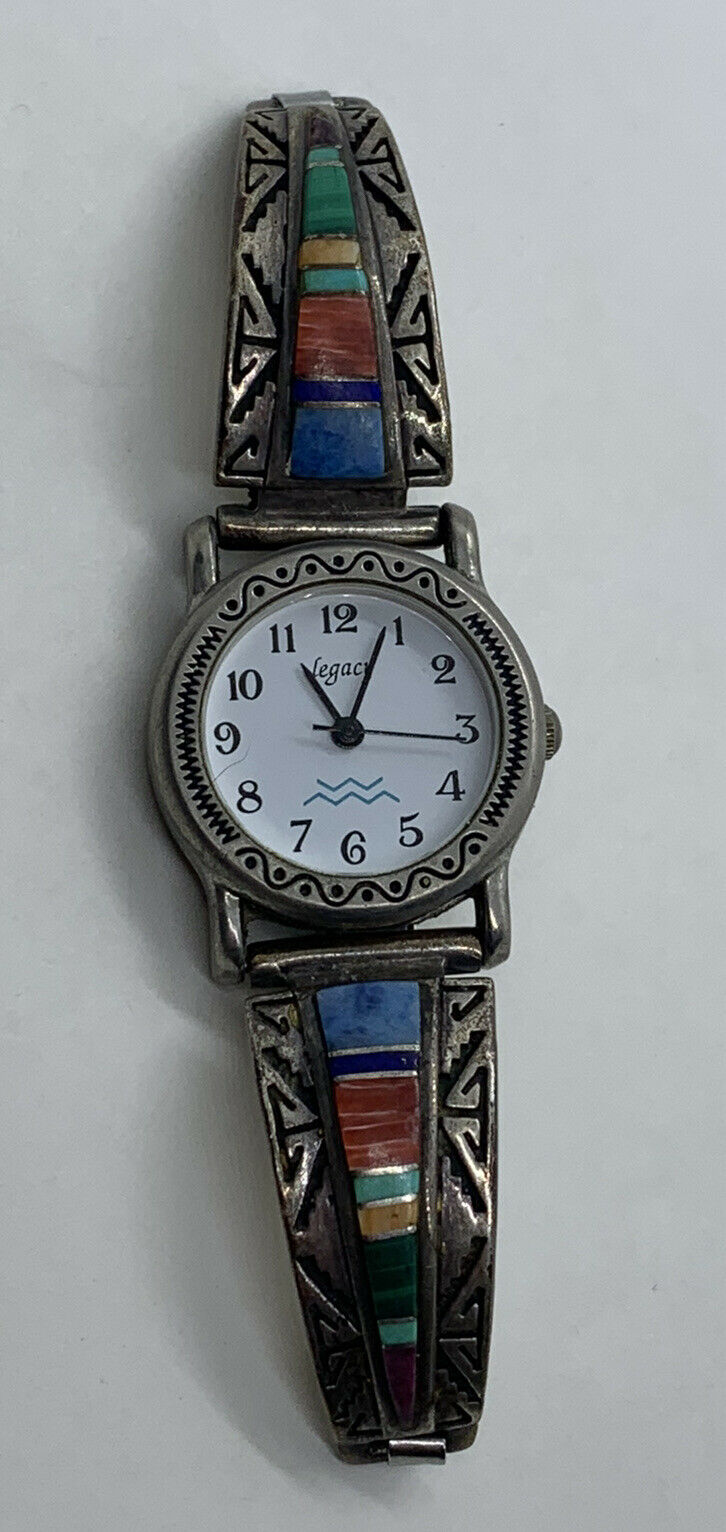-40%
OLDEST Surviving HOPI Silver + Turquoise Bolo tie - made by Morris T. Robinson
$ 2109.35
- Description
- Size Guide
Description
ATTENTION : SCROLL THIS SUB WINDOW ( Window inside another window) ALL THE WAY DOWN TO READ THE ENTIRE DESCRIPTION!!Authentic antique HOPI Silver + Turquoise Bolo tie by Hopi silversmith Morris Talawytewa Robinson ( born 1900 , died 1987). Height 2.3 inch, closer to 2.4 inch tall. Weight without counting tips sturdy 34-35 grams on micro weight scale.
Morris Robinson
was one of the great forerunners of Charles Loloma. According to the 1923
U. S. Indian Census
, Morris was already living and working in Arizona. In 1924, he was living with Hopi jeweler Grant Jenkins. They made jewelry for Graves and Vaughn’s Indian Store in Phoenix. During the next four decades, Morris became a master goldsmith and silversmith. His creative and innovative designs distinguished him among his other peers:
Ralph Tawangyawma
, Harold Jenkins, Frank Nutima, Allen Pooyouma, and Pierce Kewanwytewa. They influenced the next generation of contemporary Hopi jewelers, including
Preston Monongye
and Charles Loloma.
Morris Robinson was also an innovator and pioneer incorporating art deco styling into his jewelry very early on. He preceded Charles Loloma and
Kenneth Begay
in becoming the first Native American master silversmith in the southwest.”
Schaaf 2013, 201
Morris Robinson was of the Lizard/Snake Clan from the villages of Oraibi and Bakabi on the HOPI Third Mesa. His hallmark is H & a snake. He has been extensively collected and published
. The photo of his hallmark here is from the national book.
HOPI silversmiths started hallmarking their creations in 1930. Starting only in the 1960s they started etching the black lower silver layer with short etched lines. Prior to then the lower blackened layer was left flat.
I have knowledge of U.S. and Native American History, Native Arts & Crafts, traveled often to Hopi Nation for years and i was a collector. I showed this bolo to the Hopi Nation Tribal Government to research Morris and to show this bolo to some members of the Tribal Council . Tribal Council Vice Chairman Clark W. Tenakhongva and some Members of the Village of Bakavi ( Morris birthplace) among others expressed the opinion that this bolo is likely the OLDEST or EARLIEST surviving example of bolo tie made by a Hopi silversmith, dating to the 1940s .
The beauty and the historical significance of this treasure are incalculable!
The HEARD Museum in Phoenix , AZ, and the MNA ( Museum of Northern Arizona) in Flagstaff, AZ, curators formulated that this bolo should be in the National Museum of the American Indian ( Washington , DC) if not for sale, or at over ,000 at a major national auction house!
ps Silver was nearly black due to age , yes, old patina is nice on very old bolos, but due to blackness and age of silver it was so dark it was hard to even see the silver. I polished it lightly to restore the beauty of the art deco motifs by Morris , of course with time the silver will turn black again....
ps #2
In the photos , between the 2 turquoise stones on the silver is a tiny droplet of water, i saw it
after i posted the shots, turns out the culprit was the kitchen faucet from 2 feet away.....and one drop arrived on the bolo during the photo shooting !! Of course it's not present on the bolo now!


















